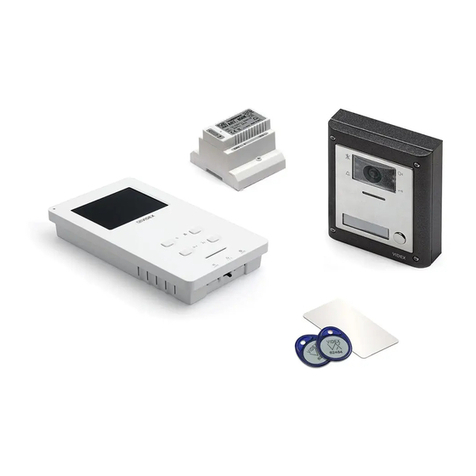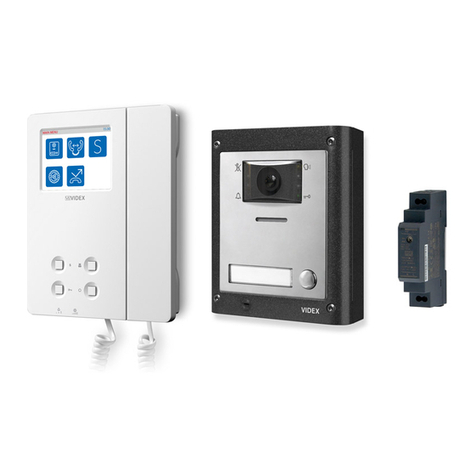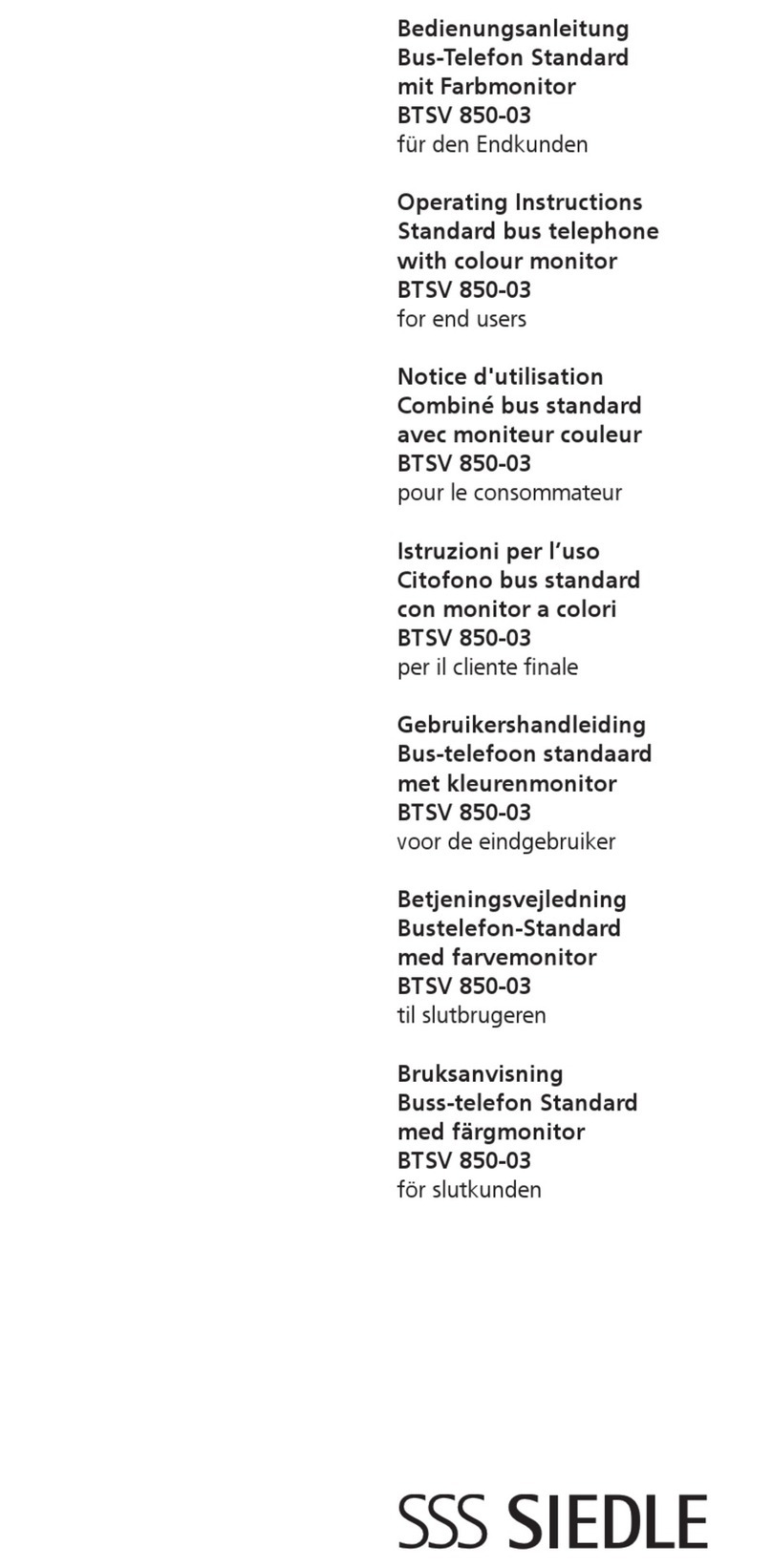Videx 940ST User manual
Other Videx Intercom System manuals
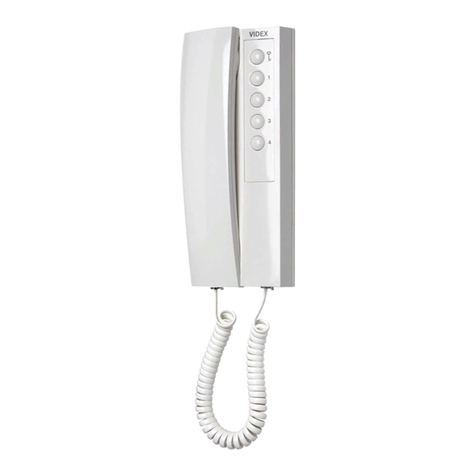
Videx
Videx 3000 Series User manual
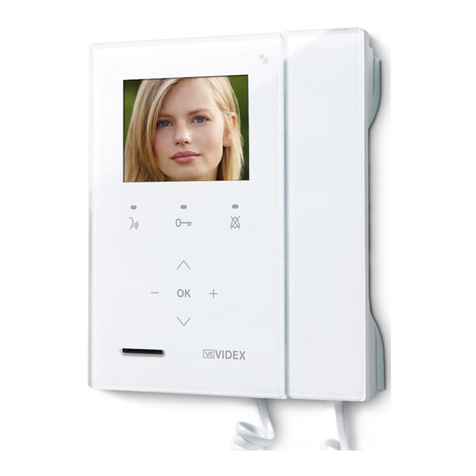
Videx
Videx Kristallo Series User manual
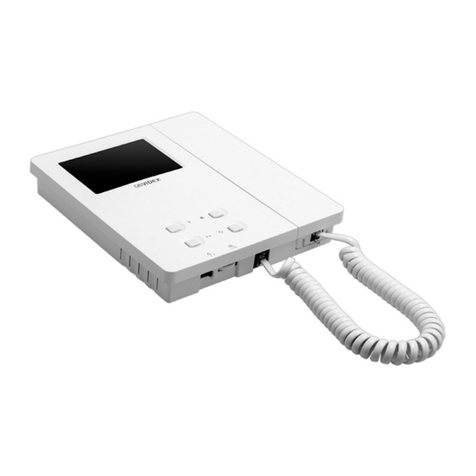
Videx
Videx VRVK Series System manual
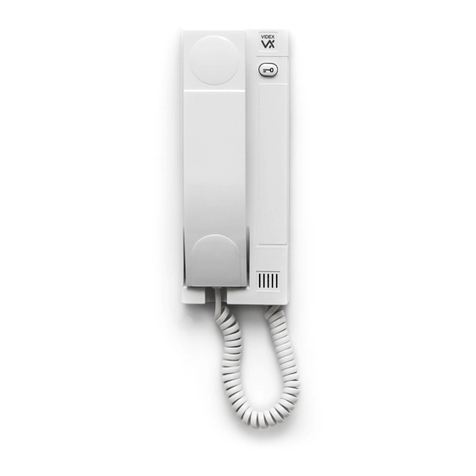
Videx
Videx 800 Series User manual
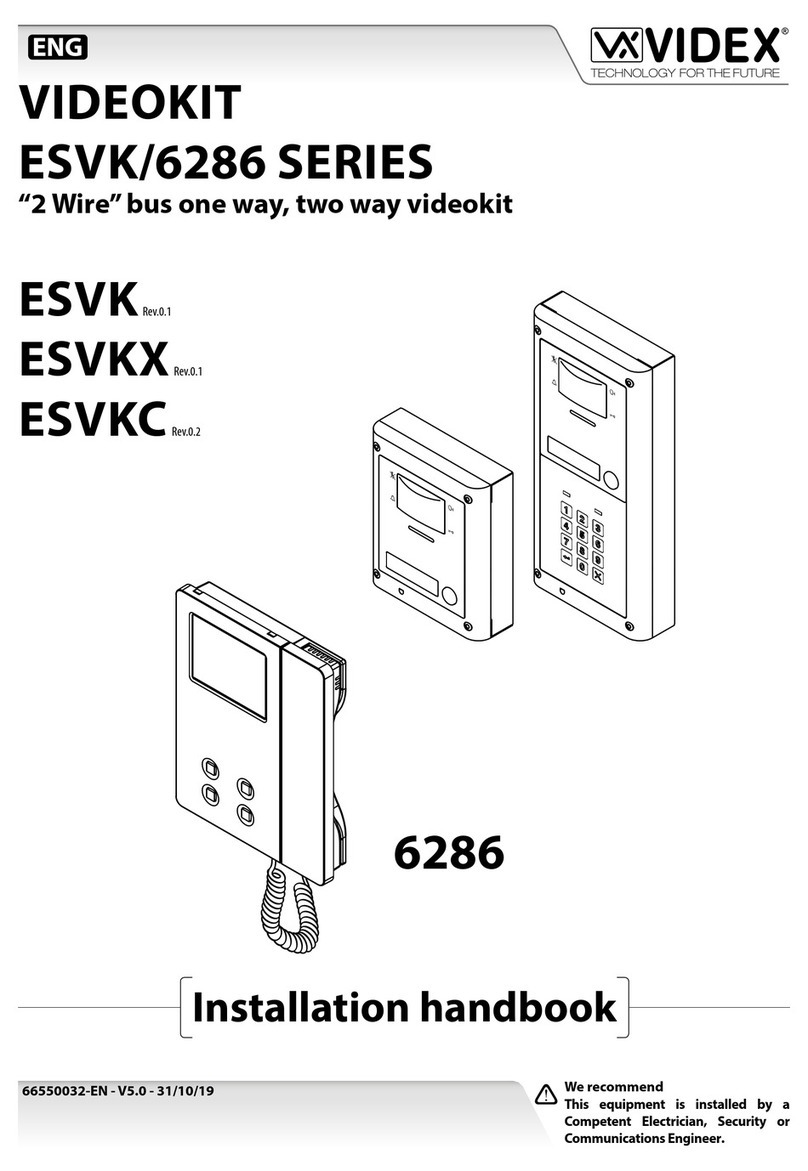
Videx
Videx VIDEOKIT ESVK/6286 Series System manual
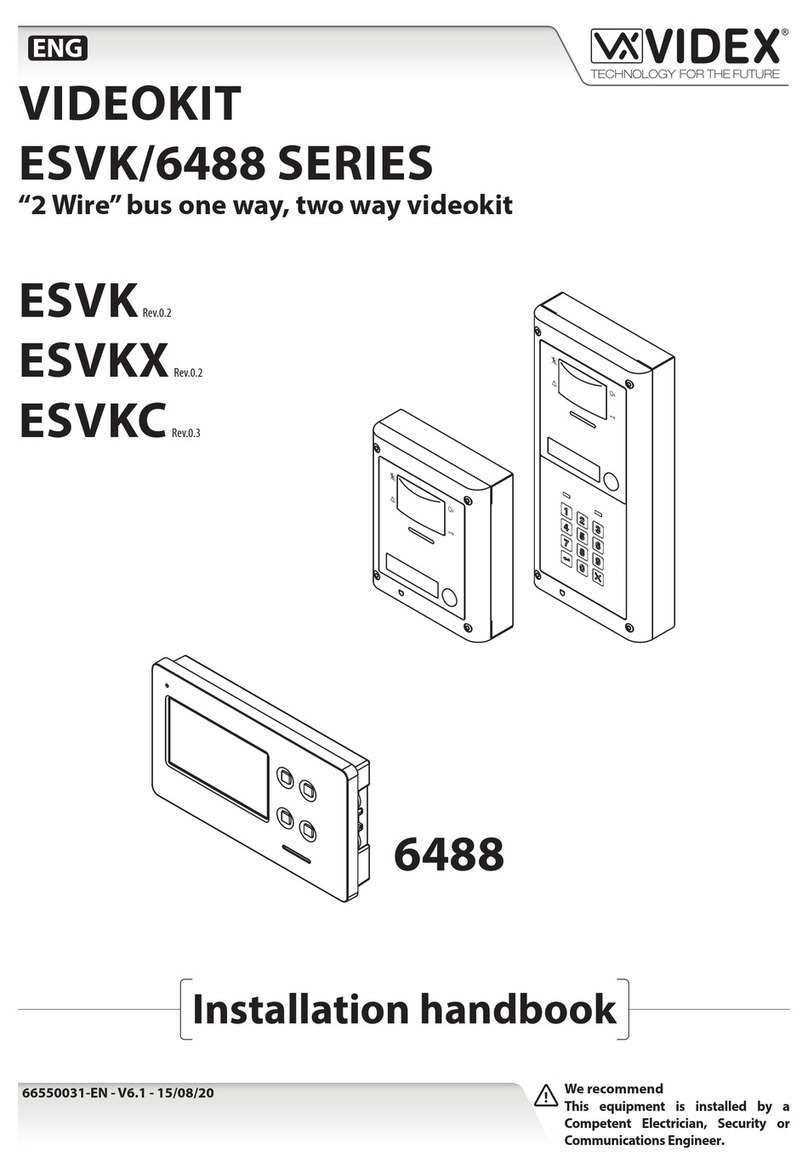
Videx
Videx ESVK/6488 Series User manual
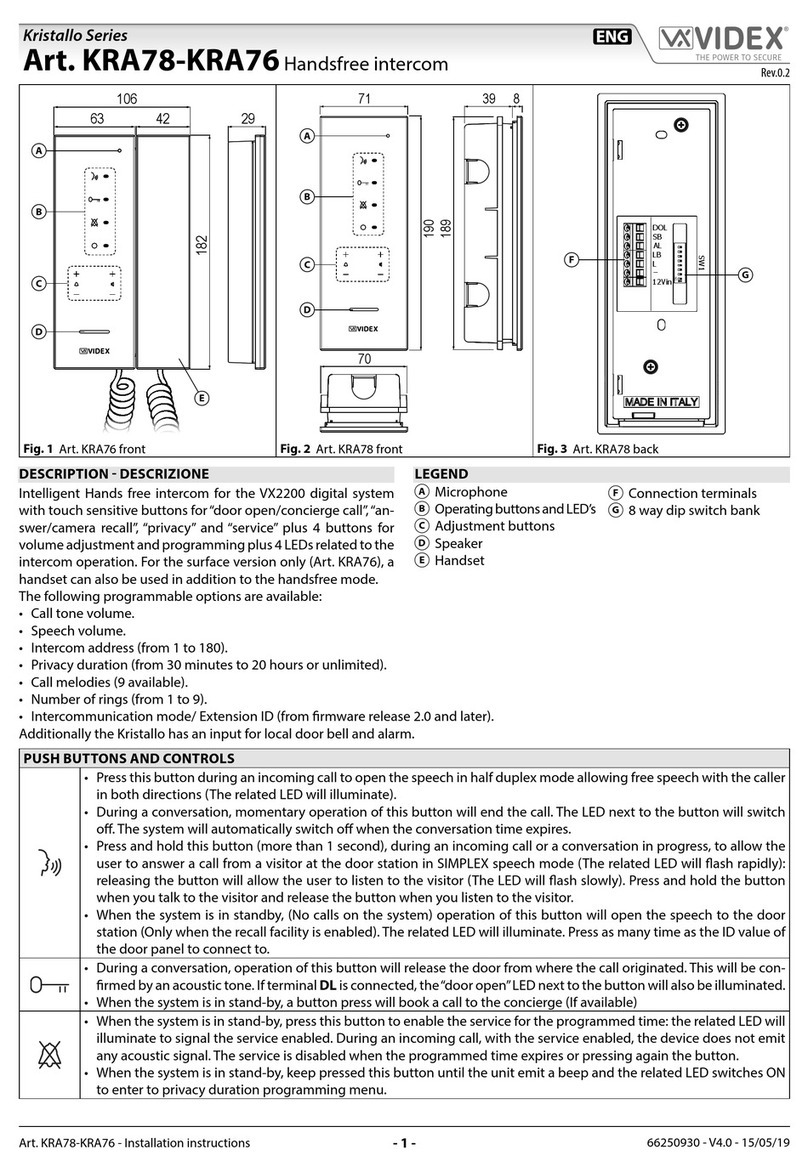
Videx
Videx Kristallo Series User manual
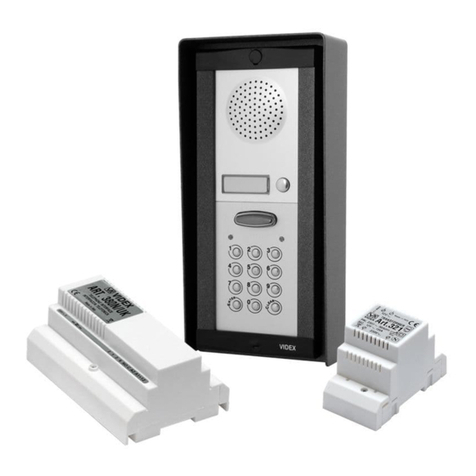
Videx
Videx 8K1 Series User manual
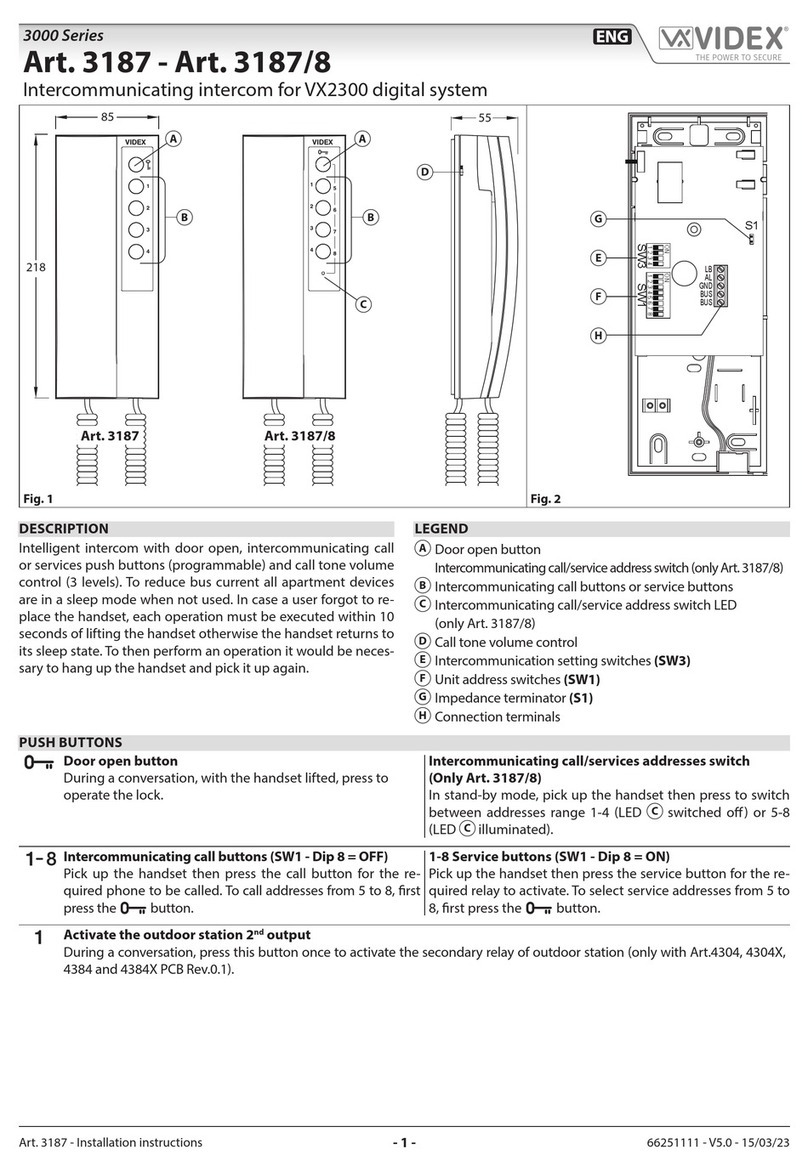
Videx
Videx 3187 User manual
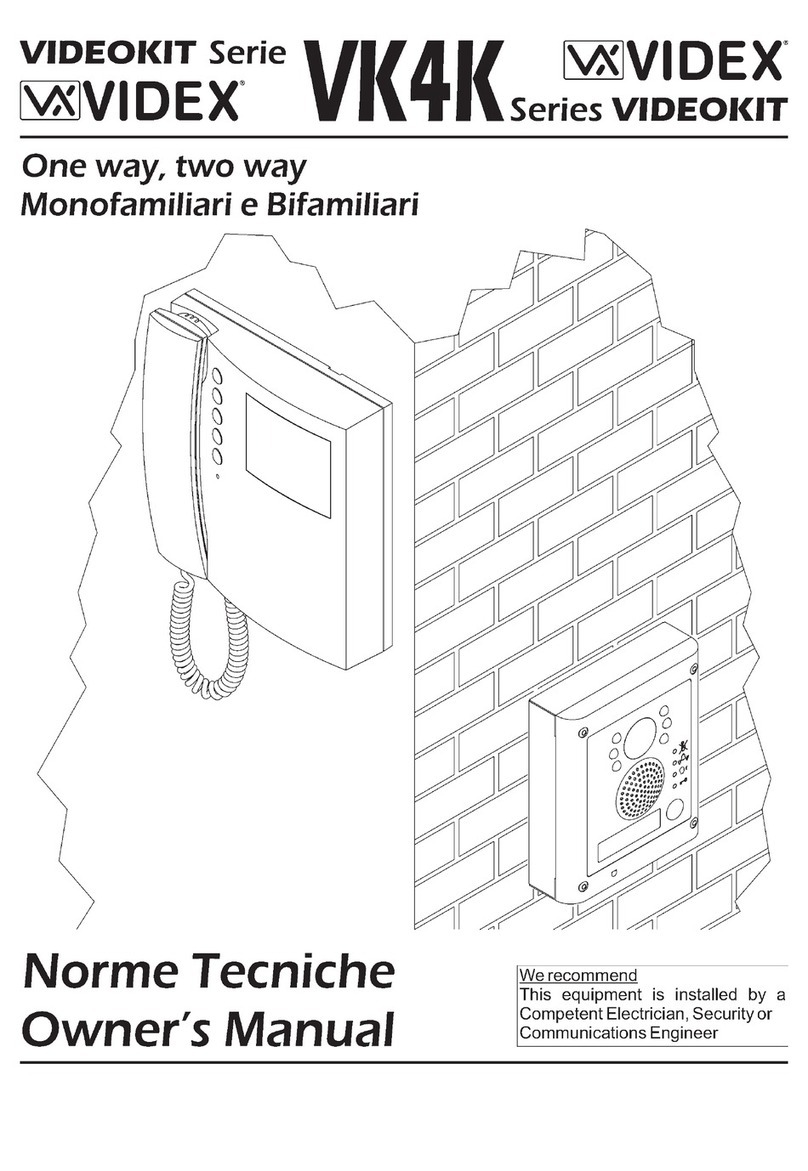
Videx
Videx Videokit VK4K-S User manual

Videx
Videx DK4K-1 User manual
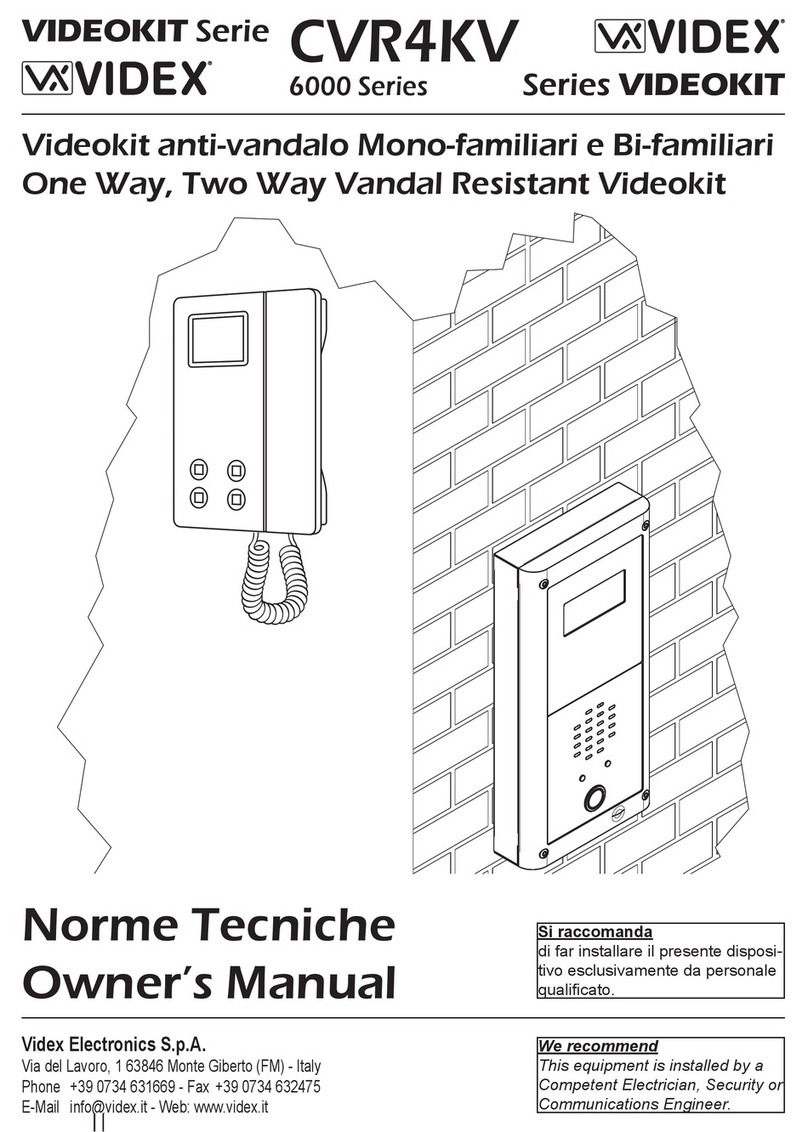
Videx
Videx CVR4KV User manual

Videx
Videx IPVK KRISTALLO System manual
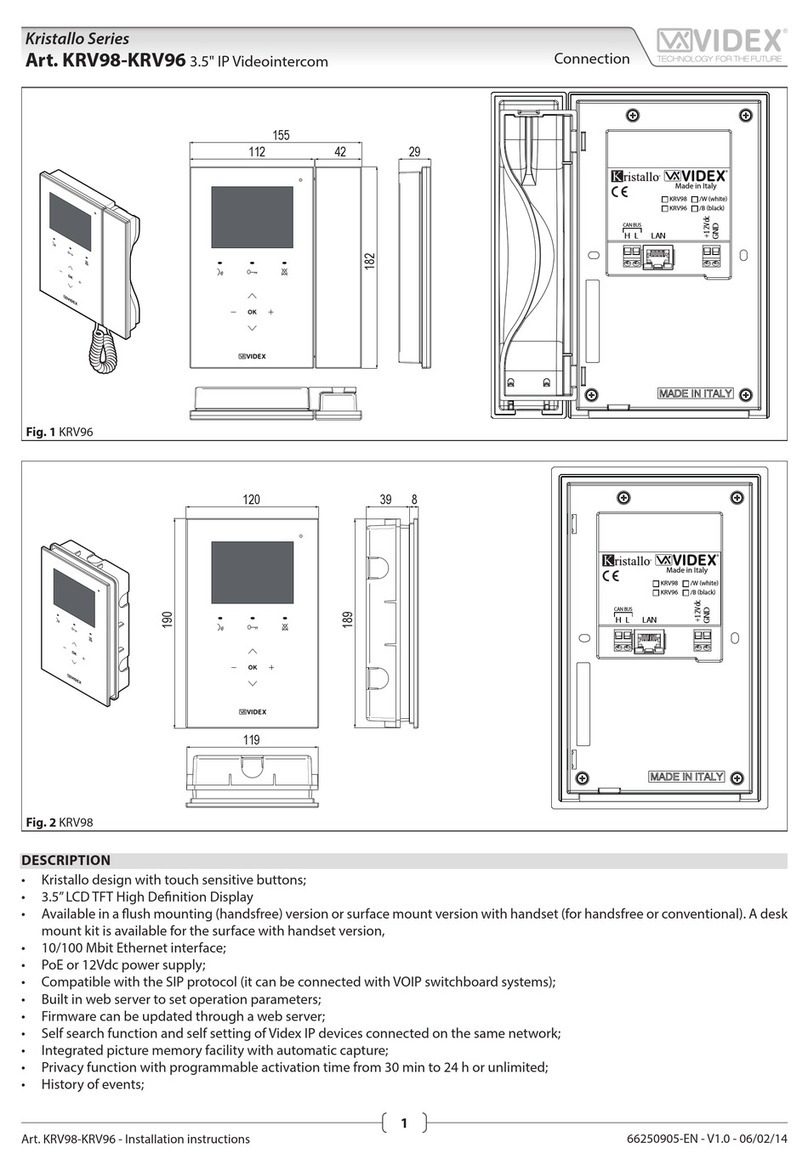
Videx
Videx KRV98 Instruction manual
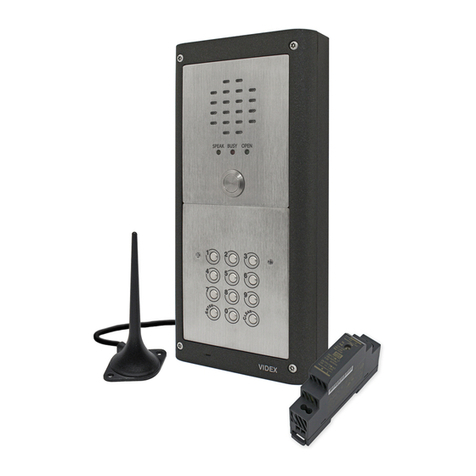
Videx
Videx VR4KGSM-1 User manual
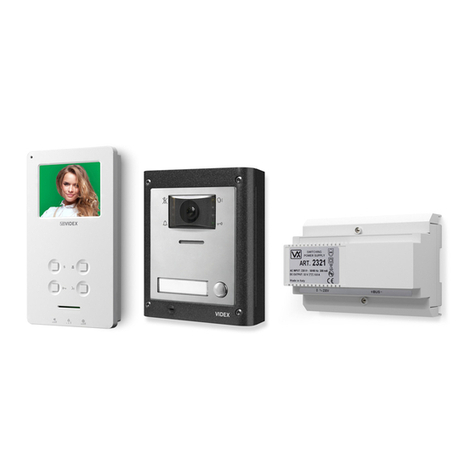
Videx
Videx ESVK/6388 Series System manual
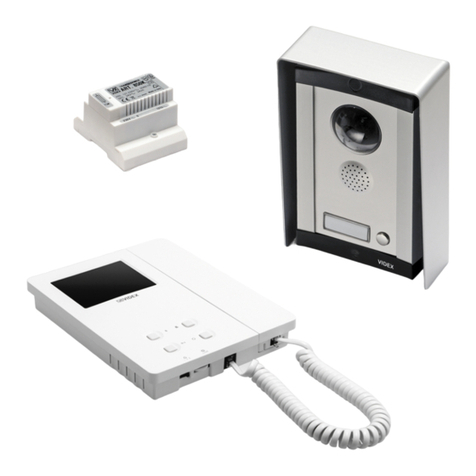
Videx
Videx CVK8K/6000 User manual
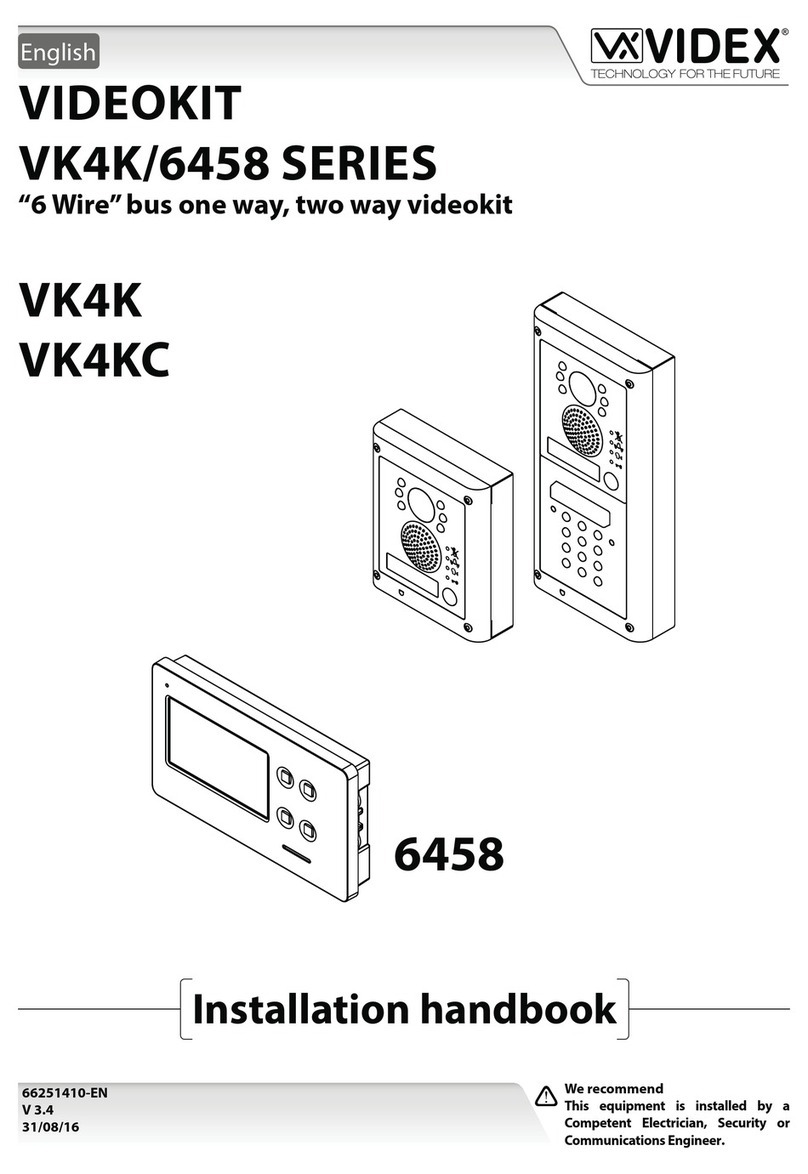
Videx
Videx VK4K Series System manual
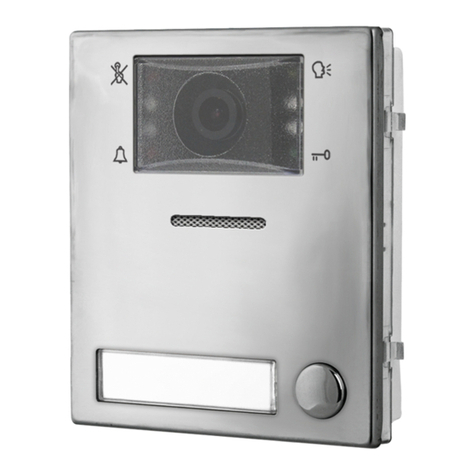
Videx
Videx 4000 Series User manual
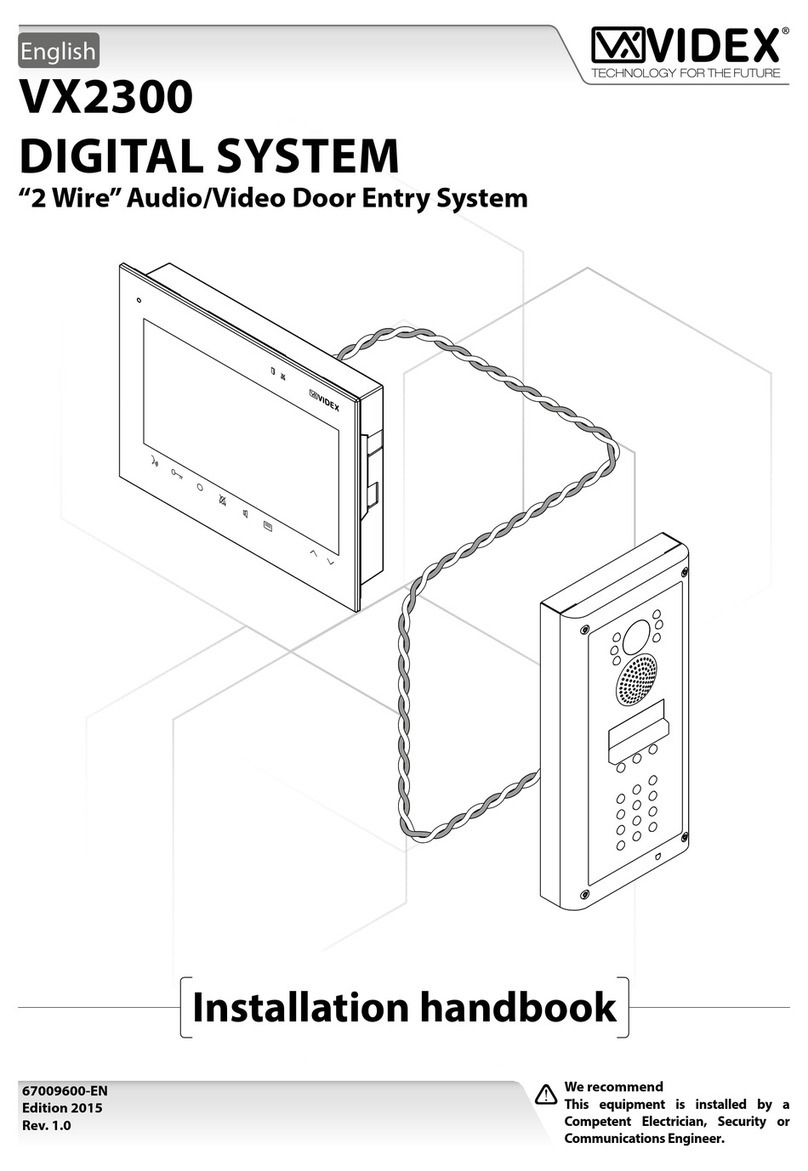
Videx
Videx VX2300 System manual
Popular Intercom System manuals by other brands

SSS Siedle
SSS Siedle BVI 750-0 Installation & programming

urmet domus
urmet domus AIKO 1716/1 quick start guide

urmet domus
urmet domus IPerVoice 1039 Installation

Alpha Communications
Alpha Communications STR QwikBus TT33-2 Installation, programming, and user's manual

Monacor
Monacor ICM-20H instruction manual

Logenex
Logenex A202CR Installation & programming
